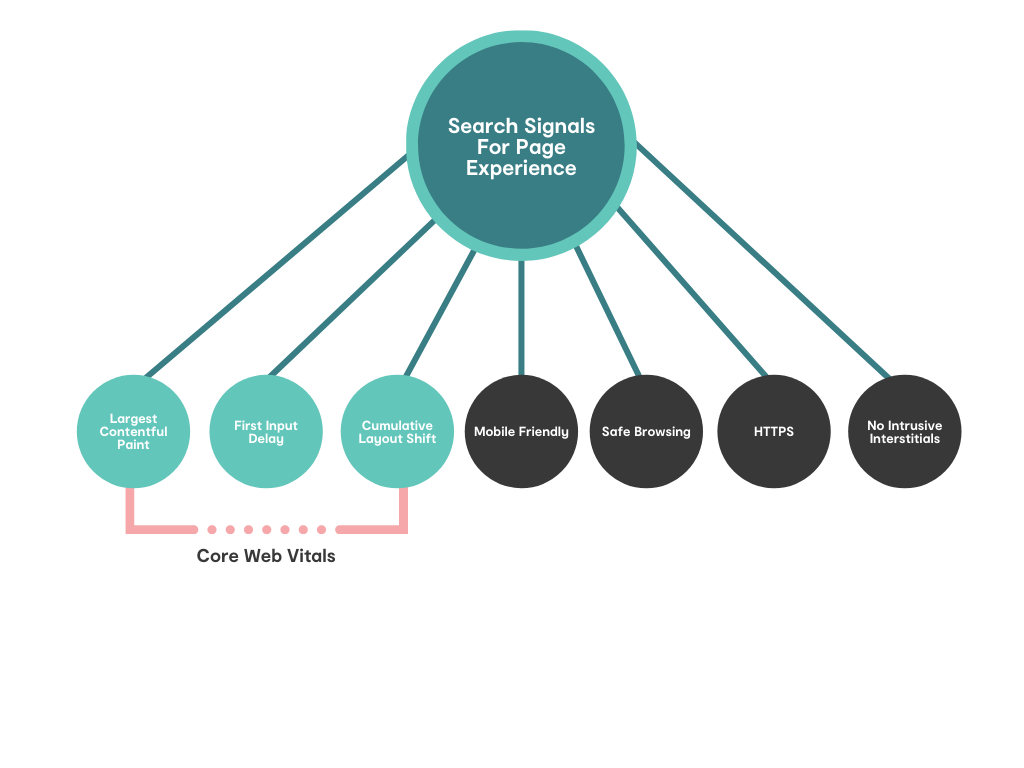The Inextricable Link Between UX and SEO Gets Stronger
Google released a statement a couple of months ago, letting the world know about an upcoming major update to their algorithm. The Google Experience Update will roll out in 2021 and the change signals Google’s move to better quantify, measure, and reward positive user experiences.
The human experience that your website provides is becoming increasingly important – and Google’s algorithm update is going to better measure page speed, layout shifts, and reaction times.
Here is what the Google Experience Update involves.
Page load speed, mobile friendliness, HTTPS, and intrusive interstitial’s have always been well known SEO factors. These will be integrated alongside three additional measures to more holistically quantify page experience, called Core Web Vitals.

The Core Web Vitals attempt to better quantify user experience as an SEO signal.
- Largest Contentful Paint (LCP): Measures the time from when the page starts loading to when the largest element is rendered.
- First Input Delay (FID): Measures the time from when a user first interacts with the site to the time when the browser is able to respond to that interaction.
- Cumulative Layout Shift (CLS): A brand new metric that tracks the overall score of all unexpected layout shifts that occur between when the page begins to load and when its lifecycle state changes to hidden. E.g. does a page move unexpectedly just before you make an important click, making you miss your target?
How you can start preparing for the update.
We will have 6 months notice to prepare for the algorithm update and it’s important to remember that shifting the dial on a website’s user experience takes time.
You can start testing your Core Web Vitals in Google Search Console right now, and this report has replaced the pre-existing speed report.
It’s also important to make an assessment of user experience across each page on the website. User experience is built on the foundational principle, that every page should have a primary objective with a set of signals that guide a user towards a desired action.
Therefore, the first step to assessing the effectiveness of a page is to understand its purpose. For example, you could measure the value of content to a user on an informational site with a heavy focus on branding through time on site, scroll depth, or video views.
On the other hand, you would closely monitor category and product page views within the sales funnel on an eCommerce website in order to understand how customers are progressing through to cart.
The far-reaching benefits of optimising for user experience.
The Core Web Vitals are a set of real-world, user-centred metrics that quantify elemental aspects of the user experience. Essentially, by optimising for these salient factors and ultimately Google’s search engine, you are also going to be optimising the human experience of your website. Conversions and rankings aside, your website is a crucial brand touchpoint and it needs to provide a seamless experience. By removing friction points, we create harmony with the intention and purpose of a page.
Optimising for the Core Web Vitals will also help to decrease dead clicks, rage clicks, and bounce rates – which have been important SEO factors in their own right for a long time.
Are we on a path to being able to accurately quantify user experience?
The Core Web Vitals are only just starting to quantify a small component of a digital experience, which is a complex, subjective, and multifaceted area.
Google’s approach is going to evolve and they are planning to incorporate more page experience signals into their algorithm every year. While content is still going to remain king, they are trying to capture a fuller picture of user experience over time. They are also racing to stay relevant with ever-changing user expectations and behaviour – and shouldn’t we all?
Effective future-proof strategies create delightful and functional experiences for humans and consider search engines second. At the end of the day, your sales and leads are coming from real users, not spiders and bots crawling your site – something Google clearly recognises and is pushing us to keep in mind while designing.